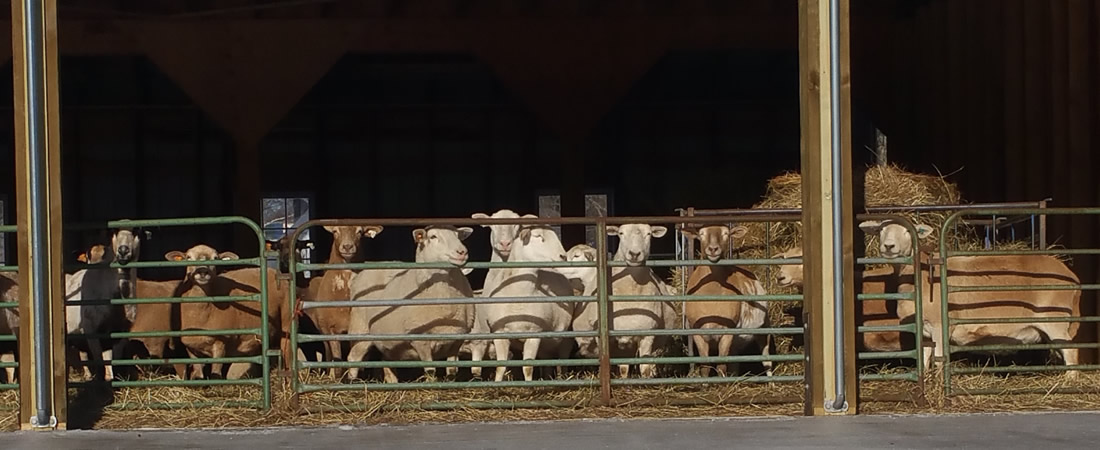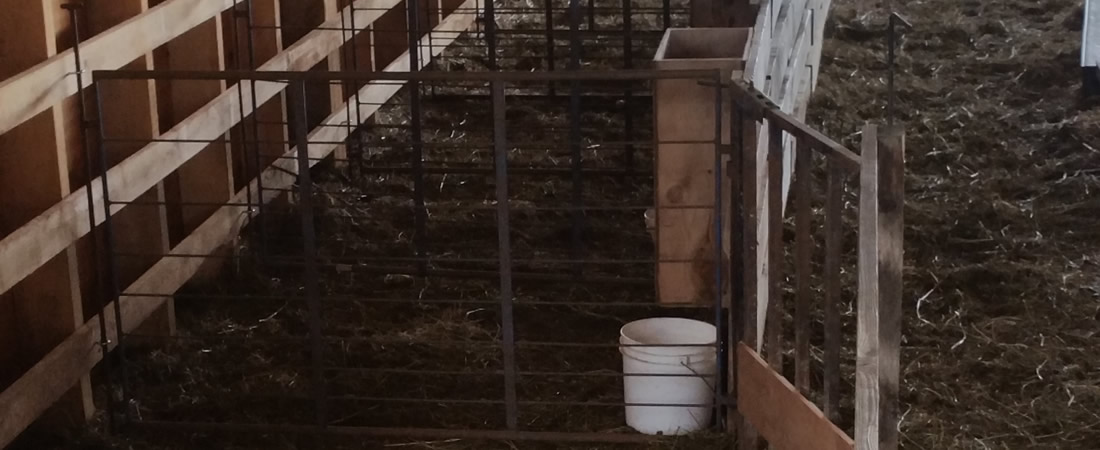Shelter Basics
We are frequently asked what sort of shelters do sheep need. The answer often is that it depends. It depends mostly on what type of management you will use and where you are located. Here in New England, cold, wet and snowy winters are common. Both of our farms use barns to house our flocks during winter. We know of several farms that successfully use only limited shelter during the winter months. Often a 3-sided shed or open building is all that is necessary to overwinter dry ewes. If lambing in winter, consideration for a dry and draft free area for newborns is important to avoid hypothermia.
An excellent summary of guidelines for housing sheep can be found here: Housing

General Considerations
The following thoughts may be useful to beginners considering housing for their flock.
- Lambing out of season (during winter) requires some type of shelter to avoid mortality of newborns.
- Elaborate structures are not necessary.
- Repurposed agricultural buildings are well-suited for raising sheep.
- Overwintering sheep with no or limited shelter requires a sound nutritional program.
- Fresh air is more important than cold temperatures to maintain respiratory health.
- Avoid “tight” or heated buildings.
- When lambing inside older barns, balance the need for air flow with temperature extremes.
- Young lambs raised under damp or wet conditions, either inside or outside, are vulnerable to coccidiosis.
- Lambing outdoors in spring and early summer can be successful with no or limited shelter.
- While on pasture, shade is more important than shelter from wind and rain.
- Bringing sheep “back to the barn” at night is not necessary and exposes them to parasites where sheep concentrate each night.
- Some states have rules for humane animal husbandry including specifications of winter shelters.
We believe the most effective barns for sheep management have an “open” side to allow abundant sunlight and fresh air in. We both use roll-up style curtains to keep out snow and rain during inclement weather especially during lambing season. We also believe that penning indoors is most effective when it is modular and interchangeable. In that, we use simple panels that hook together to quickly set up a pen, subdivide a pen, or create a working alley. Such panels can be made from steel tubing or inexpensive, rough-sawn lumber. Open barns and sheds with easily removable panels (i.e., no permanent interior walls) allow infinite possibilities for pen layout and permit easy, mechanized clean out with a small tractor or other equipment.

At Lambing Time
Many operations that lamb indoors (aka shed lambing) provide a brief period of time for mother and lambs to bond in a separate confined space. Simple pens, often referred to as jugs, measure roughly 4 ft x 5 ft. Ewes and newborns are housed in jugs for 1 to 3 days typically, but longer in the case of a weak lamb or other complication. Triplets, and especially quads, may need slightly more space depending on the size of the ewe. We find jugs especially useful when monitoring a litter of triplet lambs during their first 48 hrs. We prefer to allow ewes to deliver their lambs in a slightly larger pen without other ewes present. This drop pen can simply be 2 jugs with no divider. Some breeders allow their ewes to deliver in jugs, but we prefer to allow the ewe a bit more space. A significant number of lambs are born among the other pregnant ewes. It can be challenging to sort out which lambs belong to which ewes if too many lambs are born within a short period of time. Also, heavily pregnant and strongly maternal ewes may attempt to steal a lamb and nurse it as their own. Alternatively, newborn lambs may wander, searching for their mother, in a large pen of ewes eventually becoming weak, chilled, and not receiving adequate colostrum. Some ewes may be reluctant to accept their lamb if it was separated for a significant period of time after birth.
